Total Q1 Property Sales by Public REITs Nearly 3 Times as High as Purchases
True to their 2016 guidance announcements this winter, the nation’s publicly traded REITs have started out the year as big net sellers of property. Through the first quarter of this year, REITs have sold more than $15 billion in properties and bought less than $6 billion. The gap alone doesn’t fully tell the full story. The volume of property sales by REITs in the first quarter is higher than in any of the four quarters from 2015. Also, the volume of purchases is lower by half than any of the individual quarters last year. REITS were net buyers of properties in the first three quarters of last year and the pace of buying and selling was nearly equal in the fourth quarter. Surprised? Don’t be, said Brad Case, senior vice president, research & industry information at the National Association of Real Estate Investment Trusts (NAREIT).
Historically, REITs have taken advantage of movements in the property markets, Case said, buying when prices are down and selling when prices are up. “That is part of the reason returns for REITs are typically higher than returns for private investors,” he added. Another factor is the different ways REITs and private investors raise funds for investing. Public REITs generally issue stock to finance specific identified purchases. Private investors, on the other hand, tend to raise money directly from investors and then go out and find properties to purchase, Case said.
Property returns have been noticeably strong in the last couple of years. That, Case contends, has made it easier for private funds to raise large sums of money, and in turn resulted in a broad pool of buyers that RETs could sell to, Case said. “It’s clearly a good time to be selling,” he said.
Is There a Downside to Portfolio Selloffs?
Despite otherwise healthy property operating fundamentals, the persistent net asset value discounts for equity REIT shares vs. property prices and the early-year CMBS market disruption have kept REITs out of the equity markets for the most part in the first quarter of this year. During the first quarter of 2015, REITs raised $15.1 billion from equity offerings compared to more than $22 billion in the same quarter a year ago, according to NAREIT numbers.
The limited use of stock offerings has allowed the debt leverage for some REITs to drift upwards, primarily to help fund development and acquisitions, Fitch Ratings analysts noted this week. Given the current lower REIT valuations in the stock market, many REITs have substituted asset sales for equity issuance to fund investments. However, some REITs have taken a riskier “grow now, sell later” approach, particularly in the health care real estate sector, where leverage has weakened considerably more compared to other REIT property sectors, Fitch noted. “On balance, REIT disposition activity has exceeded our expectations, which were tempered by CMBS market disruption, a key debt-funding avenue for investors, particularly for noncore assets in tertiary markets that most REITs are targeting for sale,” said Fitch analysts.
REIT Selloff Continuing in April
The REIT sell-off trend has continued in April with news of continued REIT property sales. CBL & Associates Properties this week made $151.5 million in dispositions in two separate transactions. IN the first, CBL and its 50/50 joint venture partner closed on the sale of 100% of Renaissance Center, the 363,000-square-foot community shopping center located in Durham, NC. Renaissance Center was sold for a gross sales price of $129.2 million. The sale netted CBL $40.8 million. The buyer was a private non-traded REIT, InvenTrust Properties Corp. In a separate transaction, CBL completed the sale of The Crossings at Marshalls Creek, an 86,000-square-foot community center in Middle Smithfield, PA, for a net sales price of $22.3 million. Net proceeds from the two dispositions were used to reduce outstanding debt.
Buyer Pool Starting to Grow Thinner
Late last month, Pennsylvania Real Estate Investment Trust completed the sale of four non-core mall properties: Lycoming Mall in Pennsdale, PA; Gadsden Mall in Gadsden, AL; New River Valley Mall in Christiansburg, VA; and Wiregrass Commons Mall in Dothan, AL. Since announcing plans in November 2012 to dispose of its non-core properties, PREIT has sold 13 of its lower-quality malls, as well as several power centers and land parcels, generating approximately $600 million in gross proceeds. In an interview with SNL Financial following announcement of the most recent sales, PREIT CEO Joseph Coradino said the market for selling properties has changed quite a bit since 2012.
“The number of buyers is clearly getting thinner and thinner. To a certain extent, that’s being driven by the real difficulty people are having securing financing,” Coradino was quoted as saying. “The market has changed a lot since we sold the first asset around three years ago. Cap rates of the lower-quality assets are on the rise. Financing is more difficult. There is no CMBS market for anything more than $350 a square foot – maybe even higher. And typically the buyer, when there is one, has a significant amount of equity capital and is coming to the table with a relationship bank. Not a little bit tougher than three years ago – a lot.”
By Mark Heschmeyer
